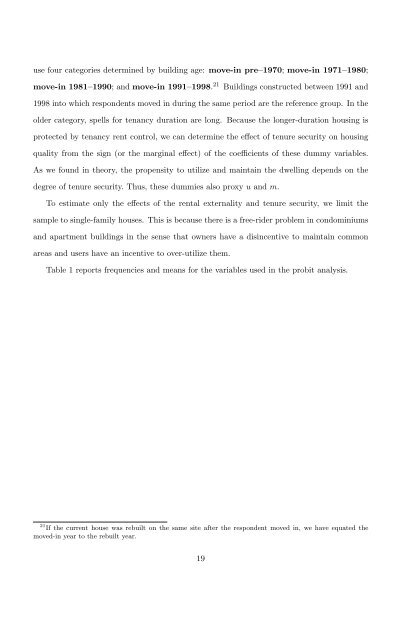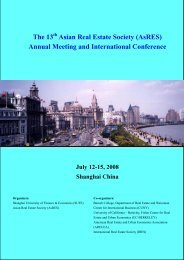Create successful ePaper yourself
Turn your PDF publications into a flip-book with our unique Google optimized e-Paper software.
use four categories determined by building age: move-in pre–1970; move-in 1971–1980;<br />
move-in 1981–1990; and move-in 1991–1998. 21 Buildings constructed between 1991 and<br />
1998 into which respondents moved in during the same period are the reference group. In the<br />
older category, spells for tenancy duration are long. Because the longer-duration housing is<br />
protected by tenancy rent control, we can determine the effect of tenure security on housing<br />
quality from the sign (or the marginal effect) of the coefficients of these dummy variables.<br />
As we found in theory, the propensity to utilize and maintain the dwelling depends on the<br />
degree of tenure security. Thus, these dummies also proxy u and m.<br />
To estimate only the effects of the rental externality and tenure security, we limit the<br />
sample to single-family houses. This is because there is a free-rider problem in condominiums<br />
and apartment buildings in the sense that owners have a disincentive to maintain common<br />
areas and users have an incentive to over-utilize them.<br />
Table 1 reports frequencies and means for the variables used in the probit analysis.<br />
21 If the current house was rebuilt on the same site after the respondent moved in, we have equated the<br />
moved-in year to the rebuilt year.<br />
19



